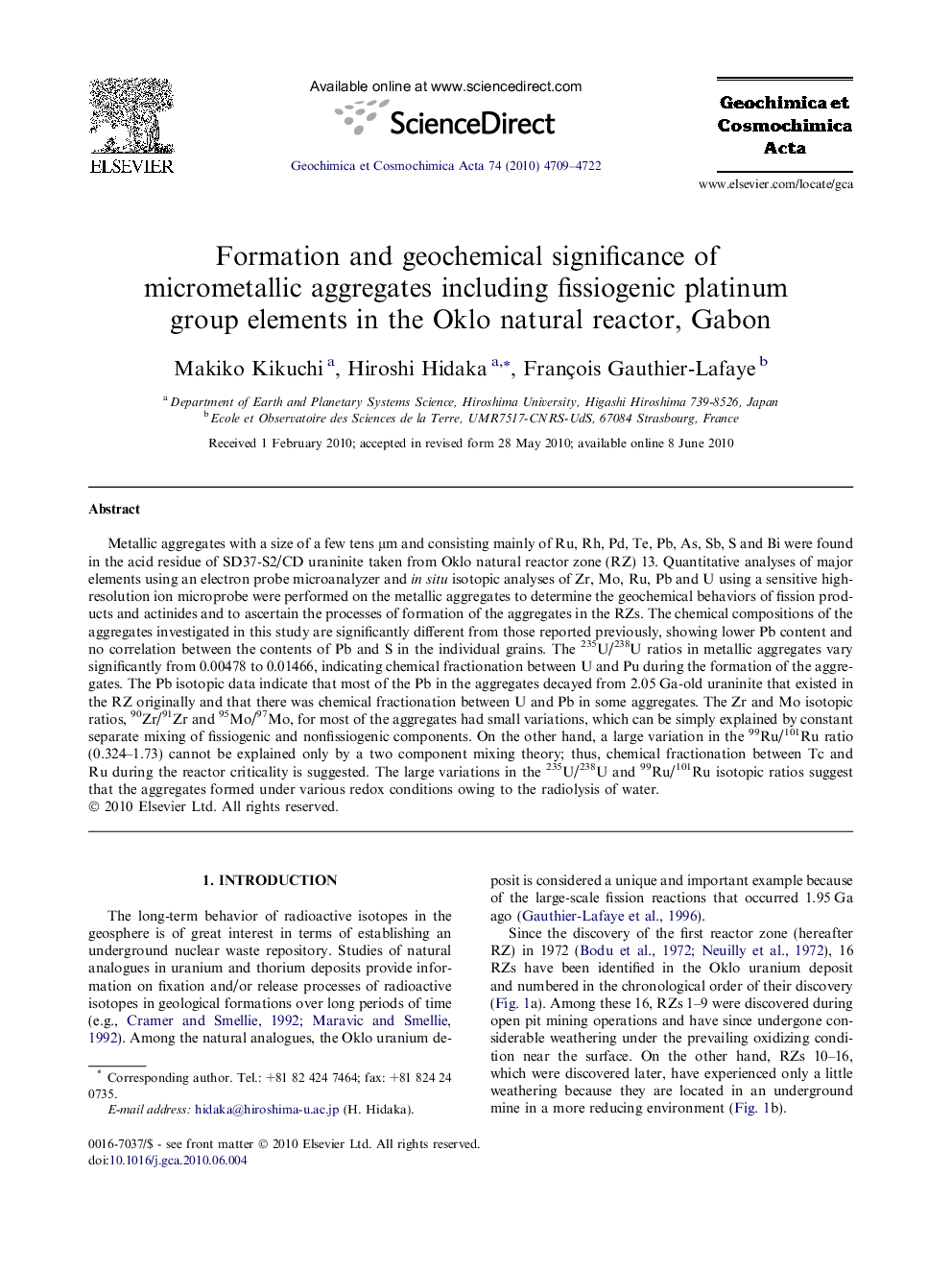| کد مقاله | کد نشریه | سال انتشار | مقاله انگلیسی | نسخه تمام متن |
|---|---|---|---|---|
| 4703890 | 1352885 | 2010 | 14 صفحه PDF | دانلود رایگان |

Metallic aggregates with a size of a few tens μm and consisting mainly of Ru, Rh, Pd, Te, Pb, As, Sb, S and Bi were found in the acid residue of SD37-S2/CD uraninite taken from Oklo natural reactor zone (RZ) 13. Quantitative analyses of major elements using an electron probe microanalyzer and in situ isotopic analyses of Zr, Mo, Ru, Pb and U using a sensitive high-resolution ion microprobe were performed on the metallic aggregates to determine the geochemical behaviors of fission products and actinides and to ascertain the processes of formation of the aggregates in the RZs. The chemical compositions of the aggregates investigated in this study are significantly different from those reported previously, showing lower Pb content and no correlation between the contents of Pb and S in the individual grains. The 235U/238U ratios in metallic aggregates vary significantly from 0.00478 to 0.01466, indicating chemical fractionation between U and Pu during the formation of the aggregates. The Pb isotopic data indicate that most of the Pb in the aggregates decayed from 2.05 Ga-old uraninite that existed in the RZ originally and that there was chemical fractionation between U and Pb in some aggregates. The Zr and Mo isotopic ratios, 90Zr/91Zr and 95Mo/97Mo, for most of the aggregates had small variations, which can be simply explained by constant separate mixing of fissiogenic and nonfissiogenic components. On the other hand, a large variation in the 99Ru/101Ru ratio (0.324–1.73) cannot be explained only by a two component mixing theory; thus, chemical fractionation between Tc and Ru during the reactor criticality is suggested. The large variations in the 235U/238U and 99Ru/101Ru isotopic ratios suggest that the aggregates formed under various redox conditions owing to the radiolysis of water.
Journal: Geochimica et Cosmochimica Acta - Volume 74, Issue 16, 15 August 2010, Pages 4709–4722